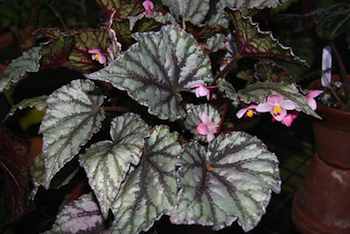- MENU
- HOME
- SEARCH
- WORLD
- MAIN
- AFRICA
- ASIA
- BALKANS
- EUROPE
- LATIN AMERICA
- MIDDLE EAST
- United Kingdom
- United States
- Argentina
- Australia
- Austria
- Benelux
- Brazil
- Canada
- China
- France
- Germany
- Greece
- Hungary
- India
- Indonesia
- Ireland
- Israel
- Italy
- Japan
- Korea
- Mexico
- New Zealand
- Pakistan
- Philippines
- Poland
- Russia
- South Africa
- Spain
- Taiwan
- Turkey
- USA
- BUSINESS
- WEALTH
- STOCKS
- TECH
- HEALTH
- LIFESTYLE
- ENTERTAINMENT
- SPORTS
- RSS
- iHaveNet.com
Old School Stalwart Houseplant: The Begonia
Sean Conway

Begonias
Among the many domestic touches that have been handed down to us from the Victorians is the houseplant. True, keeping plants in the house has a long history, but only in the latter half of the 19th century did it become a popular mania. A well appointed home meant having not only fine furnishings but also fine plants.
Today our climate-controlled houses allow us to grow a much wider range of flora than was possible a century ago. Even so, some of the signature houseplants of the Victorian era remain popular today. One such is the begonia, a plant valued mostly for its interesting foliage.
There are more 900 species of begonia, and most of them fall into one of three distinct root structures: tuberous, rhizomatous and fibrous.
Tuberous types form flattened tubers below the soil, much like potatoes, allowing them to survive periods of dormancy. These begonias form beautiful, large rose-like flowers from late spring to fall, and are most often planted outside in containers or hanging baskets.
Rhizomatous begonias form thick, contorted, trunk-like structures above the soil. The popular Rex, or King begonia, with its exceptionally ornately patterned foliage, is an example of this type.
Fibrous begonias have fine, hair-like roots. Angel-wing begonias are a typical example. Their graceful wing-like leaves and cane-like stems make them popular for both indoor and outdoor pots.
Both rhizomatous and fibrous begonias make excellent houseplants. The color patterns, shapes and sizes of their foliage come in endless variety. Leaves range in size from a half-inch across to more than a foot. Some varieties are smooth and others are covered with tiny hairs giving them a fuzzy appearance. While most have either green or red leaves, they are often patterned with silver, pink or purple markings.
Begonias as a group are fairly easy plants to grow which is one reason they have retained their popularity over the years. Native to tropical and subtropical regions, they prefer temperatures that range between 60 and 75 degrees. They enjoy drying out between watering. I usually wait until I see the leaves starting to wilt slightly before giving a thorough watering. I also use water that is room temperature or slightly warmer to avoid shocking the roots.
While begonias benefit from drying out slightly, they also prefer high humidity. In the home this can be achieved by placing your plants on trays of pebbles filled with water. Be careful not to let the bottom of the pot sit in the water, as this will cause the roots to rot.
Begonias thrive in bright, indirect light. They will be happy in a north- or east-facing window, but should be set back from western or southern exposures to prevent the sun from burning the leaves.
I feed my plants with water-soluble fertilizer at half the recommended dose every other week from April through November, while they are in active growth. I also move my plants outside during the summer months to a shady spot where they thrive in the warm days and cool nights.
Many begonias produce a substance called oxalic acid, a natural chemical that keeps most insects at bay; however, begonias can suffer from mealy bug infestations. Mealy bugs are white, fuzzy insects that look like small bits of cotton. They can be controlled by submerging the leaves and stems of the plant in a sink full of room temperature water to which one teaspoon of dish soap has been added. Repeat weekly until the infestation ends.
A wonderful selection of begonias is available from Logee's Greenhouse in Danielson, Conn. Check out their Web site (www.logees.com) to order or just get an idea of the wide variety this distinguished genus has to offer.
AUTOS | HOBBIES | EDUCATION | FAMILY | FASHION | FOOD & RECIPES | HOME DECOR | RELATIONSHIPS | PARENTING | PETS | TRAVEL | WOMEN
© Tribune Media Services